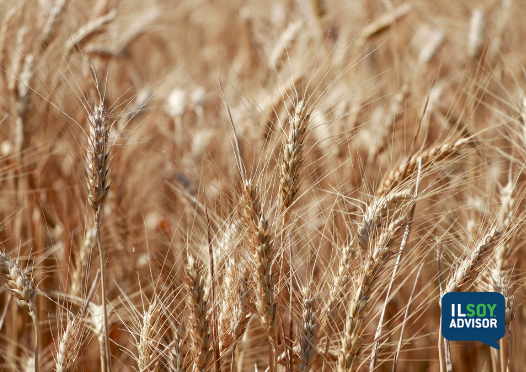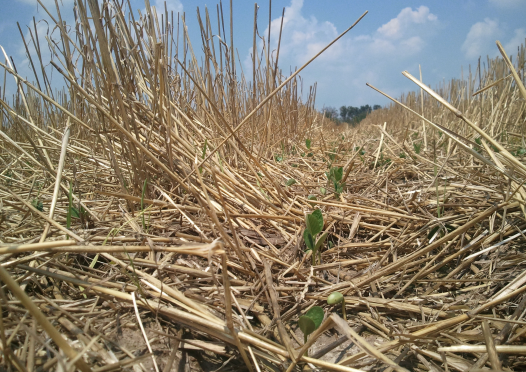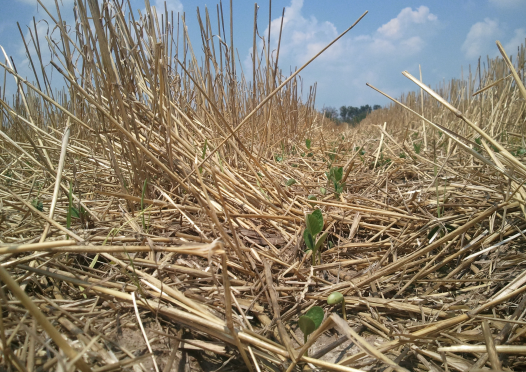ILSOYADVISOR POST
Managing those Double-Crop Beans
Got your double-crop beans planted? What should you pay attention to next?
As we move into the middle of July now is the time to pay special attention to your double-crop soybeans. July often is a critical time in the life of a double-crop soybean because of many factors. And some of those factors can play havoc, not only with your double-crop beans this year, but also with the corn crop planted next year on those same acres.
The biggest factor right now on the double-crops is the weather. In many places in Southern Illinois we are very hot and dry. Both full season soybeans and corn face these hot and dry conditions. But to young double-crop soybeans it can be double trouble with small plants and less root volume. Many beans were planted in mid to late June after wheat was already in the third or fourth trifoliate stage. Those young beans are in dry soil and sitting in an environment that has been extraordinarily hot.
On July 7 we scouted some double-crop beans that were wilted because of the surface heat in those fields. Temperature readings were over 120° F by noon on many of those fields. In places where the beans were smaller than three to four trifoliate the newer leaves had a scorched appearance.
Another factor in this hot and dry environment is weed pressure. In many areas volunteer wheat as well as waterhemp and other broadleaves are competing for any moisture that is available. Herbicide spraying is critical right now, but we need to be aware of two things: Recropping interval and crop damage.
Many residual herbicides that would do a good job on many broadleaf weeds have a 10-month recropping interval before going back to corn. We must be aware of what we are spraying and when we can plant next year’s corn crop. Crop damage is another thing to consider when it is hot and dry because a plant can’t metabolize the herbicide quickly enough before damage occurs.
Some herbicides that don’t have a long recropping interval can cause leaf burning after application. Add this stress to already stressed-out soybeans and now the weeds have a chance to outgrow them.
Another consideration is scouting for insects. With the hot dry weather, many insects will move from dry field borders into the field to eat on the young tender soybeans. Border scouting against waterways and other green areas is a must this time of year under these conditions.
Timely rains will help this year’s double-crops “get out of the straw” and growing well. However, it’s important to limit the competition for moisture and reduce stress by keeping bugs at bay. We need to do this in a manner that causes the least amount of stress to the growing crop and doesn’t set up possible problems with the 2018 crop yet to be planted.
Timely scouting and due diligence with best management practices will help ensure that we have a chance at high yields, weather permitting, and no issues with future crops.
Kelly Robertson is a Certified Professional Agronomist and a Certified Crop Adviser. He has a Masters of Science (MS) in Plant and Soil Science and has spent 25 years as a soil fertility agronomist and precision agriculture consultant in southern Illinois while also spending 4 years as a Farm/Agronomy Manager and GIS Coordinator for a large farm in southeastern Illinois.





Comments
Add new comment